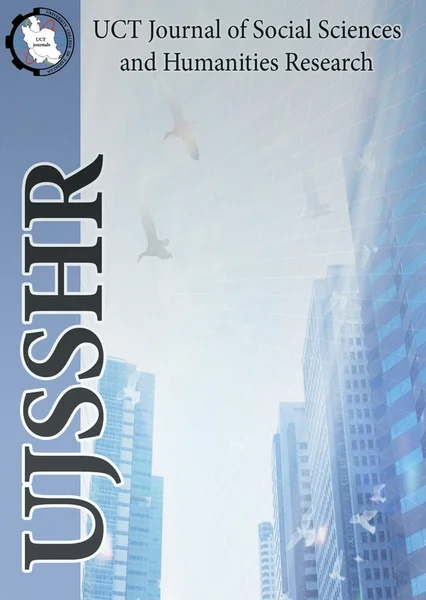-
a review of forensic analysis in criminal cases
جزئیات بیشتر مقاله- تاریخ ارائه: 1400/08/01
- تاریخ انتشار در تی پی بین: 1400/08/01
- تعداد بازدید: 587
- تعداد پرسش و پاسخ ها: 0
- شماره تماس ژورنال: 989394668909
the historical development, contributions and limitations of the two traditional approaches to trace evidence analysis are reviewed. the first approach was as generalist practitioner, looking broadly at an assemblage of many different particle types. the second was that of specialist practitioner, with attention focused on one specific particle type. four factors have significantly impacted the effectiveness of these approaches: (1) increasing technological capabilities, (2) increasing complexity in the character of manufactured materials, (3) changes in forensic laboratory management, and (4) changing scientific and legal expectations. more recently, new technologies have been applied to some trace evidence problems, intended to address one or more limitations. this has led to a third approach founded on discrete, highly technical methods addressing specific analytical problems. clearly new technologies have the potential to revolutionize forensic trace evidence, but just as clearly some of the traditional capabilities have been rendered ineffective, or lost entirely, by the way we have come to approach the problem. having critically defined the current limitations of and the desired outcomes, the next focus should be consideration of alternative approaches that might achieve such a result.
حوزه های تحت پوشش ژورنال
مقالات جدیدترین رویدادها
-
استفاده از تحلیل اهمیت-عملکرد در ارائه الگوی مدیریت خلاقیت سازمانی و ارائه راهکار جهت بهبود
-
بررسی تاثیر ارزش وجوه نقد مازاد بر ساختار سرمایه شرکت های پذیرفته شده در بورس اوراق بهادار تهران
-
بررسی تأثیر سطح افشای ریسک بر قرارداد بدهی شرکت های پذیرفته شده در بورس اوراق بهادار تهران
-
بررسی تأثیر رتبه بندی اعتباری مبتنی بر مدل امتیاز بازار نوظهور بر نقد شوندگی سهام با تأکید بر خصوصی سازی شرکت ها
-
تأثیر آمیخته بازاریابی پوشاک ایرانی بر تصویر ذهنی مشتری پوشاک ایرانی (هاکوپیان)
-
بررسی نقش خودکارآمدی کنترل احساس، علائم افسردگی و استرس پس از سانحه بر خطر ابتلا به خودکشی در میان نوجوانان شهرستان کرمانشاه
-
برآورد حدود آتربرگ رس های مورد استفاده در هسته رسی سدها با استفاده از شبکه های عصبی مصنوعی (مطالعه موردی: منبع قرضه هسته رسی سد مخزنی آغ چای)
-
جهت های جغرافیایی مطالعات اجتماعی پایه چهارم ابتدایی
-
تعیین فشار، تنش موثر و شتاب در راستای قائم تونل مدفون در خاک ماسه ایی تحت تاثیر انفجار سطحی
-
on the behavior of nitrogen in a low-ni high-mn super duplex stainless steel
مقالات جدیدترین ژورنال ها
-
مدیریت و بررسی افسردگی دانش آموزان دختر مقطع متوسطه دوم در دروان کرونا در شهرستان دزفول
-
مدیریت و بررسی خرد سیاسی در اندیشه ی فردوسی در ادب ایران
-
واکاوی و مدیریت توصیفی قلمدان(جاکلیدی)ضریح در موزه آستان قدس رضوی
-
بررسی تاثیر خلاقیت، دانش و انگیزه کارکنان بر پیشنهادات نوآورانه کارکنان ( مورد مطالعه: هتل های 3 و 4 ستاره استان کرمان)
-
بررسی تاثیر کیفیت سیستم های اطلاعاتی بر تصمیم گیری موفق در شرکتهای تولیدی استان اصفهان (مورد مطالعه: مدیران شرکتهای تولیدی استان اصفهان)
-
رویکرد داده کاوی برای برنامه ریزی فرآیند مبتنی بر دانش
-
بررسی نقش رهبری معنوی بر چابکی سازمانی
-
بررسی تأثیر مالکیت نهادی بر نوسان پذیری قیمت و بازدهی سهام
-
بررسی پیش آینده ای برداشت از سیاست سازمانی
-
structural behavior of pipelines buried in expansive soils under rainfall infiltration (part i: transverse behavior)


سوال خود را در مورد این مقاله مطرح نمایید :